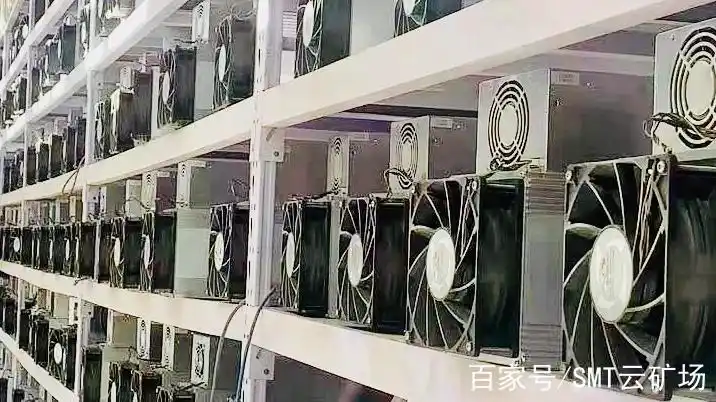Is Alephium Mining Worth It? A Dive into Hosting Expenses
The relentless hum of GPUs, the whirring of cooling fans – these are the sounds of the digital gold rush, the modern-day pursuit of cryptocurrency mining. Alephium, a relatively new entrant in the blockchain space, has piqued the interest of many miners. But the crucial question remains: is Alephium mining worth it, especially when factoring in the often-overlooked elephant in the room – hosting expenses?
Alephium distinguishes itself with its BlockFlow architecture, a sharded blockchain solution designed to improve scalability and efficiency. This translates, theoretically, to lower transaction fees and faster confirmation times compared to legacy blockchains like Bitcoin. The promise of a more streamlined and potentially profitable mining experience is alluring, particularly in a landscape dominated by established cryptocurrencies like BTC, ETH, and even the meme-fueled DOG. The siren song of a fresh, less saturated market can be tempting for both seasoned miners and newcomers alike.
However, the allure of Alephium mining hinges significantly on profitability, and that’s where hosting expenses come into play. Mining, at its core, is a computationally intensive process. It requires powerful hardware – dedicated mining rigs – consuming copious amounts of electricity. This electricity bill, coupled with the need for adequate cooling to prevent overheating and hardware damage, constitutes the bulk of hosting expenses. These costs can quickly eat into potential profits, turning what seems like a lucrative venture into a break-even or even loss-making endeavor.

The economics of Alephium mining, therefore, necessitate a thorough cost-benefit analysis. Factors to consider include the initial investment in mining hardware (GPUs or specialized ASICs), the electricity consumption of the rig, the cost of electricity per kilowatt-hour in your location (or the hosting facility’s location), the hash rate of your hardware, and the current price of Alephium. Network difficulty, a measure of how challenging it is to solve the cryptographic puzzles required for mining, also plays a critical role. As more miners join the Alephium network, the difficulty increases, requiring more computational power and, consequently, more electricity to earn the same amount of ALPH.
Mining machine hosting offers a potential solution to alleviate some of the burden of these expenses. Hosting facilities, often located in regions with cheap electricity and advanced cooling infrastructure, provide a dedicated space for your mining rigs. They handle the technical aspects of maintaining the hardware, ensuring optimal uptime and preventing costly downtime due to overheating or hardware failure. In essence, you’re outsourcing the operational complexities of mining to professionals who specialize in it. This is particularly attractive for individuals who lack the technical expertise or the space to set up and maintain their own mining operation.
Choosing the right mining machine hosting provider is paramount. Look for facilities with a proven track record, robust security measures to protect your hardware and data, reliable internet connectivity, and transparent pricing structures. Compare different hosting packages based on your specific needs and budget. Pay close attention to factors like electricity rates, maintenance fees, and uptime guarantees. A well-chosen hosting provider can significantly improve your mining profitability and reduce the risk of unexpected expenses.
Furthermore, consider the long-term viability of Alephium. While it may currently offer higher profitability compared to more established cryptocurrencies, this advantage may not last forever. The cryptocurrency market is notoriously volatile, and the price of ALPH could fluctuate significantly. Additionally, as the Alephium network grows, the mining difficulty will likely increase, requiring more powerful and energy-efficient hardware to remain competitive. A diversified mining portfolio, perhaps including BTC, ETH, or other promising altcoins, can help mitigate the risks associated with relying solely on Alephium.
The environmental impact of cryptocurrency mining is also a growing concern. The energy-intensive nature of the process contributes to carbon emissions, exacerbating climate change. Consider supporting mining operations that utilize renewable energy sources, such as solar, wind, or hydroelectric power. This not only reduces your environmental footprint but also aligns with the growing trend of sustainable investing and responsible business practices. The future of cryptocurrency mining likely lies in embracing more energy-efficient algorithms and sustainable energy sources.
Ultimately, determining whether Alephium mining is “worth it” is a highly individual decision. It depends on your risk tolerance, your access to capital, your technical expertise, and your long-term investment goals. A thorough understanding of the economics of mining, the intricacies of the Alephium blockchain, and the potential risks and rewards is essential for making an informed decision. Don’t be swayed by hype or promises of quick riches. Do your research, crunch the numbers, and carefully consider all the factors involved before diving into the world of Alephium mining. Remember, the digital gold rush can be lucrative, but it also requires diligence, prudence, and a realistic assessment of the costs and benefits.


This insightful dive into Alephium mining’s hosting expenses uncovers surprising cost pitfalls, like stealthy fees eroding profits, while highlighting potential rewards for tech-savvy miners. A balanced, eye-opening read that leaves you questioning the crypto gamble.